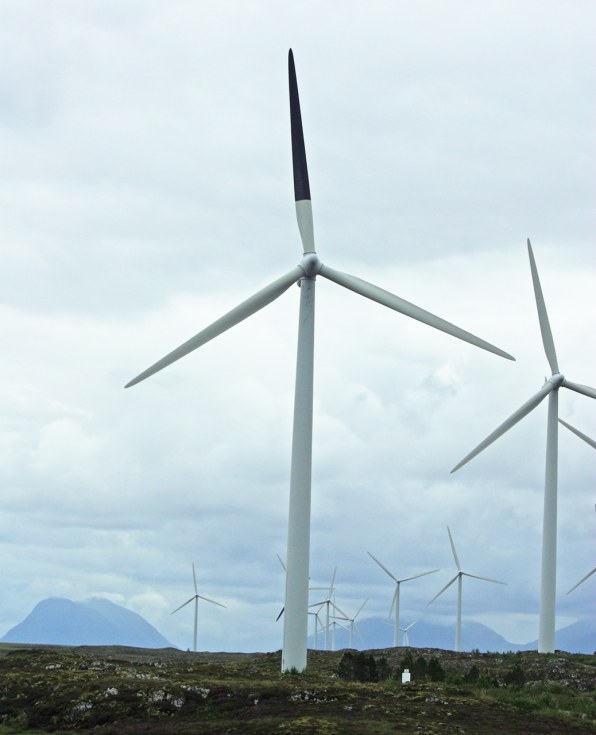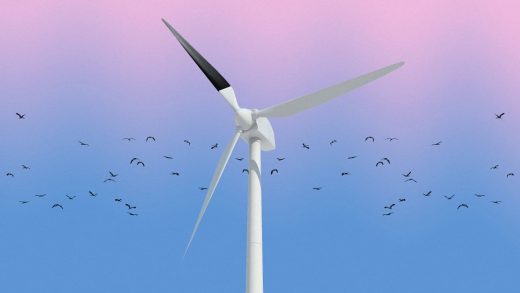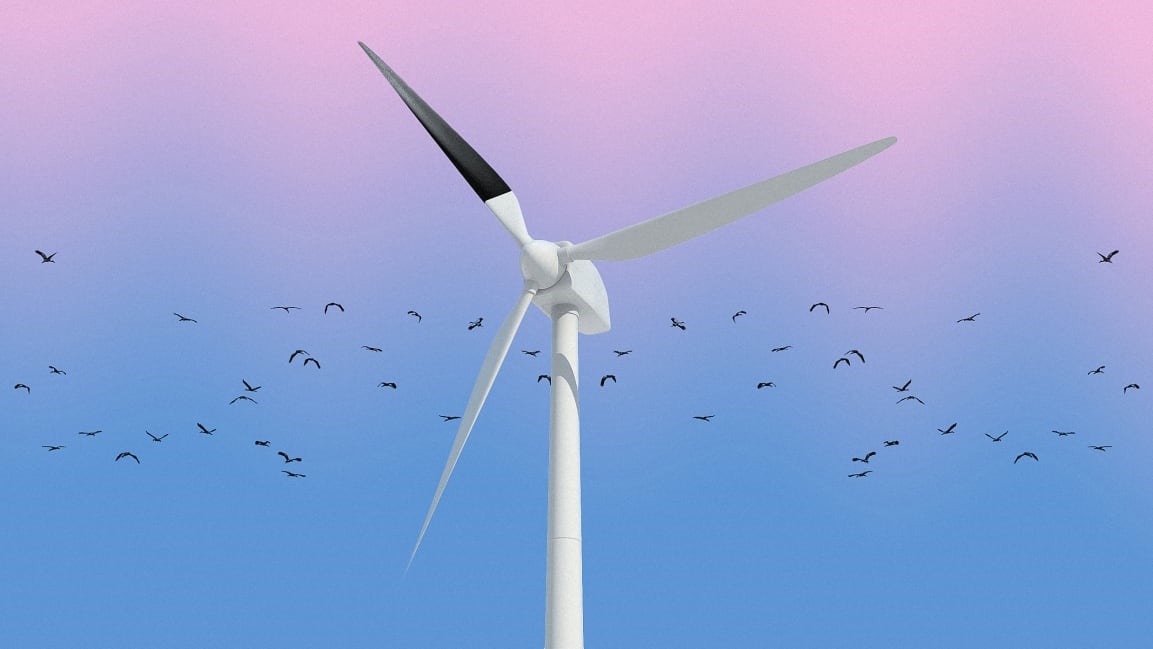Painting wind turbine blades black can reduce bird deaths 70%
If you’ve heard President Trump talk about wind power, you’ve heard stories about dead birds: “You want to see a bird graveyard? You just go. Take a look . . . Go under a windmill someday. You’ll see more birds than you’ve ever seen, ever, in your life.” Wind turbines, in fact, aren’t the biggest killer of birds—that would be house cats, which kill an estimated 1.4 billion to 3.7 billion birds in North America alone each year, roughly 100 times more than wind farms. Building windows and cell phone towers are also bigger culprits. But as birds struggle with the impacts of climate change, anything to help reduce unnecessary deaths is critical. On wind farms, the fix could be as simple as paint.

In a new study, researchers found that painting a single blade black on a white wind turbine reduces bird deaths by around 70%. The step makes blades more visible as they spin, even though they sometimes reach speeds of more than 150 miles an hour. “Because of this high speed the rotor blades become blurred, both for humans as for birds,” says Roel May, a senior research scientist at the Norwegian Institute for Nature Research and lead author of the study. “This effect is called motion smear. The rationale behind painting one of three rotor blades black is to reduce this motion smear effect, making the rotor blades more visible.”
While there are a few different ways to try to make wind farms less dangerous for birds, including choosing locations that are less likely to be in the path of birds, shutting down turbines during migration, or using tech that can detect birds or bats and then automatically shut down, painting blades could be particularly effective. The study was fairly small, and the researchers suggest that it should be followed by more research. But the results were promising and were bolstered by the fact that there was already detailed data on bird deaths at the Norwegian wind farm where it took place. “We found a significant reduction in the bird collision rates,” May says. “Even though the experiment included only four painted and four neighboring control turbines, the study did cover 7.5 years pre-treatment and 3.5 years after.” The intervention was especially helpful for white-tailed eagles, a species that had been killed by wind turbines at the site at a high rate in the past.
Wind turbine manufacturers may eventually begin painting turbines with a black blade before they ship. Painting after the blades are installed is a challenge: The researchers had to wait until a day when the wind wasn’t blowing, and then someone had to rappel up 200-plus-feet to paint the 131-foot-long blades.
(42)



